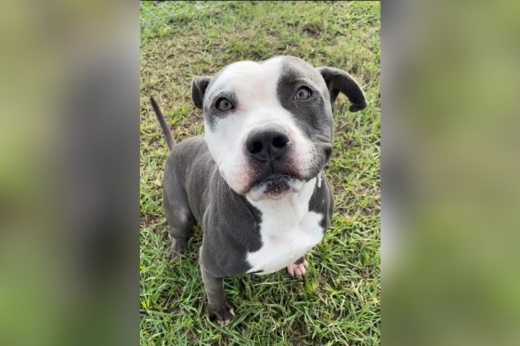Updated 12:15 p.m. Nov. 16
Fort Bend County officials said they are not considering euthanizing animals at the animal shelter for space, despite being more than 250% full.
What you need to know
A Nov. 15 Facebook post from the Fort Bend County Animal Services Facebook account stated that "to meet the demand for shelter space that we do not currently have, we will be making the very difficult decision to euthanize animals in our shelter for those who need to come in."
However, Shelter Director Rene Vasquez and Kaila Williams, communications director for Fort Bend County Health & Human Services, said the post is inaccurate, and the county does not euthanize animals to save space at the shelter.
"We don’t do that, and we haven’t done that in probably seven years. We have not had to euthanize for space, but we’ve also not ever encountered .... what we are right now," Vasquez said. "We're trying to use our tactics ... to show the community we need help."
A closer look
Vasquez said euthanasia is possible for animals who are sick, injured or aggressive, but the shelter has implemented a number of strategies to get animals adopted to avoid euthanizing animals for space.
A Nov. 9 news release from FBCAS introduced the department's Pets Urgently Seeking Homes initiative, or PUSH list. The 10 dogs on the list have been with the shelter for over a year, Williams said. Two have been adopted as of Nov. 16.
"Being in a shelter that long—it's not healthy for the animals in a sense. Numerous medical issues, behavioral issues can arise," she said.
Although she said those dogs may be "more susceptible" to euthanasia because of their time in the shelter, Williams said in email that FBCAS "has not made any decisions nor is considering euthanizing any animals on our recently shared PUSH list."
In addition to the PUSH list, Vasquez and Williams said the department is using other methods to get pets adopted, including:
- Waiving fees on adoptions
- Sending mass emails to animal rescue organizations
- Trying to find transportation to send animals to other locations in the northern U.S.
- Educating the public about the animal services department and the shelter's location
Posted 6:22 p.m. Nov. 15
Fort Bend County’s animal shelter is more than 255% full—leading shelter officials to consider euthanizing dogs to make room for others.
“We have had an abundance of animals just continue to come through our doors, ... and unfortunately we just can't find a way or source to get the animals out,” said Rene Vasquez, shelter director of Fort Bend County Animal Services.
By the numbers
The shelter has enough room to house about 90 dogs, but as of Nov. 15 the shelter held 230 dogs. Dog cages cover the shelter’s hallways, and there’s now no more room for the cages, Vasquez said.
“We’ve been full maybe for a year or a little under, but not like this," he said. "Right now, we don’t know where to put dogs. Do we line up black crates outside in the courtyard where they're exposed to the weather? ... Yesterday we [took in] 23 dogs, so what do we do if tomorrow it's another 15?"
If things don't improve by the end of November, Vasquez said staff may have to make the difficult decision to euthanize dogs to create more space. Before this, he said the shelter has maintained a 90% save rate for the last five years, meaning 90% of the animals who enter the shelter leave alive.
How we got here
The Rosenberg facility provides animal services for unincorporated Fort Bend County, which Vasquez said equals about 875 square miles. Vasquez said the animal services industry has gotten worse since the COVID-19 pandemic began and has exacerbated shelter crowding issues.
Vasquez said he believes inflation has contributed to the overcrowding, as it's harder for residents to afford care for their animals.
“If a person comes and says that [cost is] the reason that they want to relinquish an animal, we will help them; like we'll find a kennel for them or we'll find dog food for them. We will help vaccinate animals for free,” he said.
The county’s shelter isn’t the only local facility that has faced capacity issues. In August, the Sugar Land Animal Shelter was also over capacity, with officials planning adoption events in October and considering stopping animal intake to combat the issue.
Long term, Vasquez said county staff have discussed opening other shelters across the county to help alleviate overcrowding.
The takeaway
The main way community members can help the shelter is to adopt dogs, Vasquez said. To encourage adoptions, the shelter has waived its adoption fees. Additionally, all animals are spayed or neutered, up to date on vaccinations and microchipped.
For those unable to adopt, Vasquez encouraged residents to share adoption information with friends and family. However, the shelter will also accept donations of blankets and dog food.
"We're not even asking for donations—we just need help. We don't want to do the alternative," he said. "I'd rather get animals adopted and rescued instead of having to do something different."






